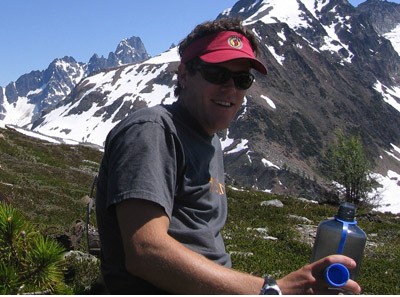Insights from Canada’s Top Rep on International Guiding
Piche gives behind-the-scenes look at his new job with IFMGA


Marc Piche was recently appointed chair of IFMGA technical subcommittee on risk management and is the Technical Director of the Association of Canadian Mountain Guides. Piche is an internationally successful climber and IFMGA Mountain Guide who co authored The Bugaboos with Chris Atkinson in 2003. Piche is based in the Canadian Rockies where he answered a few questions we had concerning his new position.
What is the status of Canadian Guiding like in the international guiding scene?
You don’t always know what others think of you and as a Canadian guide I need to go with what I’ve heard. My impression is that ACMG guides are well respected among IFMGA nations for a variety of reasons.
In 1973, Canada was the first non-central-European nation admitted to the IFMGA which at the time consisted of the five alpine countries – France, Italy, Switzerland, Austria and Germany.
ACMG members are generally well-rounded. Internationally we are known for our ski guiding industry and professional avalanche education.
The ACMG was the first IFMGA nation to incorporate a specialty guide training program where people could focus on a single discipline rather than needing to become Mountain Guides which refers to someone who has completed their training and certification in all three disciplines: Rock, Alpine and Skiing. This model is not popular in Europe for several reasons. It is the reason the ACMG has previously helped both the United States and New Zealand meet the IFMGA standard by creating similar training programs in the past. The ACMG is currently helping the Russian Mountain Guides Association do the same.
What are the issues your committee looks at?
I am currently chairing the IFMGA Risk Management committee. The focus of this international group is ‘accident reduction through education and cultural adaptation’. So what does this mean? I like to compare our situation to the commercial aviation industry where despite a very high level of training, assessment and proficiency, accidents still happen. Our goal is to improve both the delivery and materials used for the education of risk reduction and decision making with an initial focus on learning from previous accidents and better communication between guides.
The reason for the statement on cultural adaptation is that we would like to see these efforts make a difference with both newly minted guides as well as the old dogs.
How does the work of a committee like yours and the ACMG benefit everyone in climbing?
In my experience what guides and instructors do in the field both in terms of hard skills and decision making has a trickle down effect on a large percentage of the climbing community. This is likely due to the amount of instructional work done by ACMG members every year.
In terms of hard skills the techniques we use are the result of numerous tests and collaborations within the international professional mountain community. With regards to the so called soft skills of risk management and decision making, I am optimistic that we will continue to refine our processes in order to be better able to pass them on in the future.
Hopefully these efforts will eventually help everyone be safer and more successful in the mountains.


